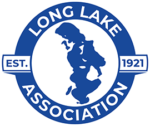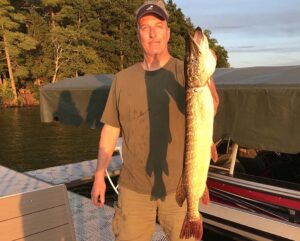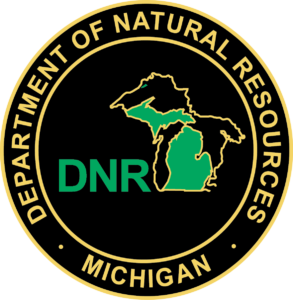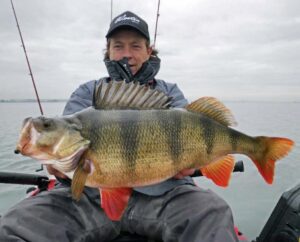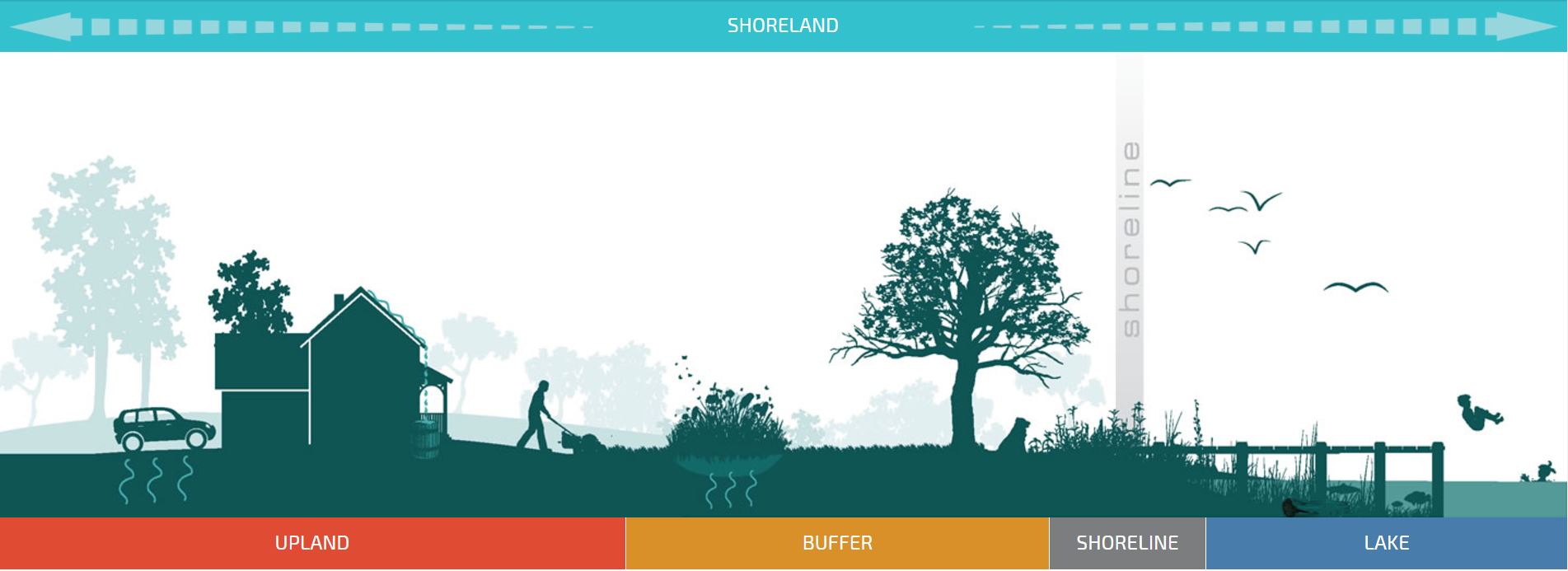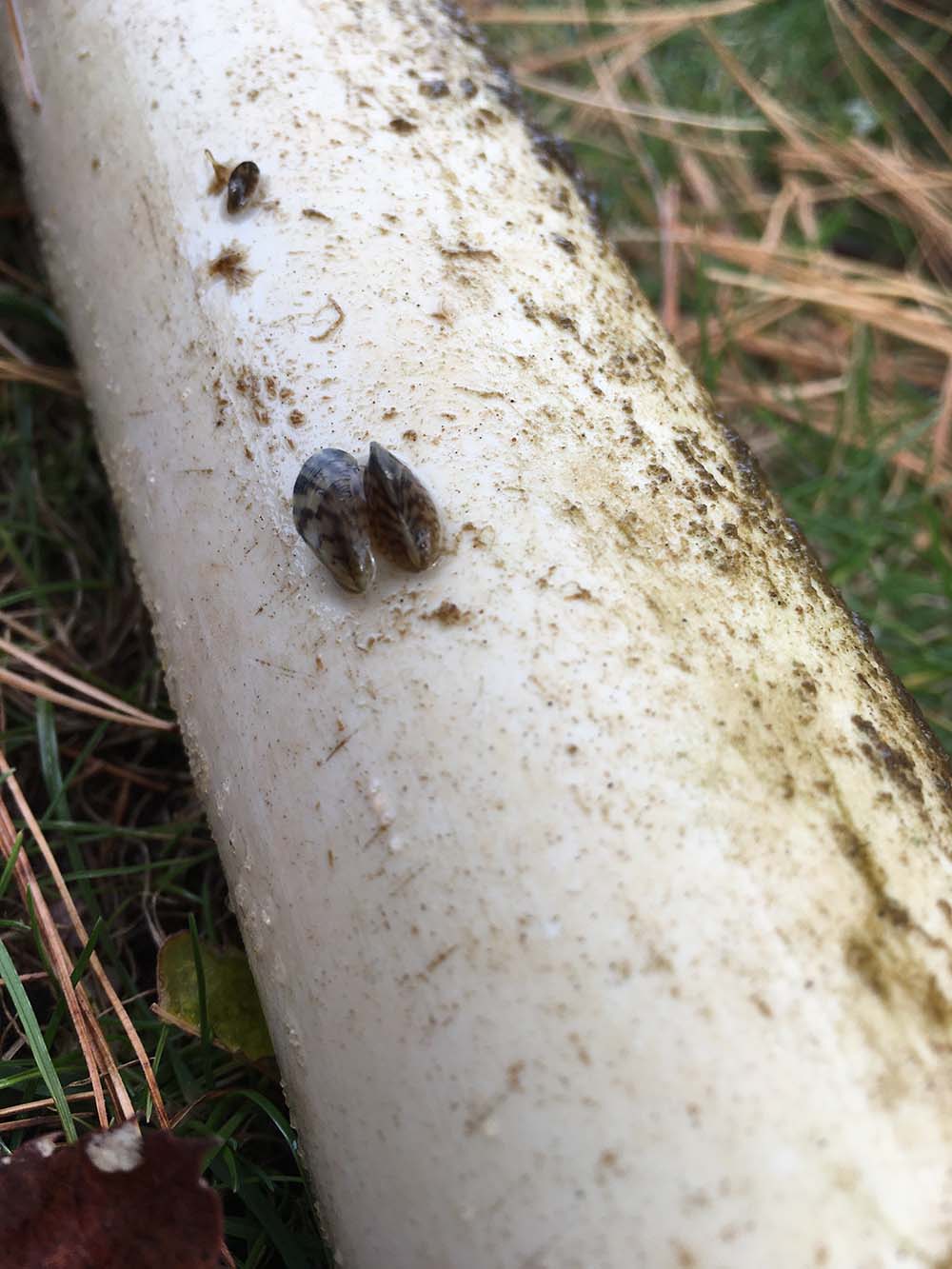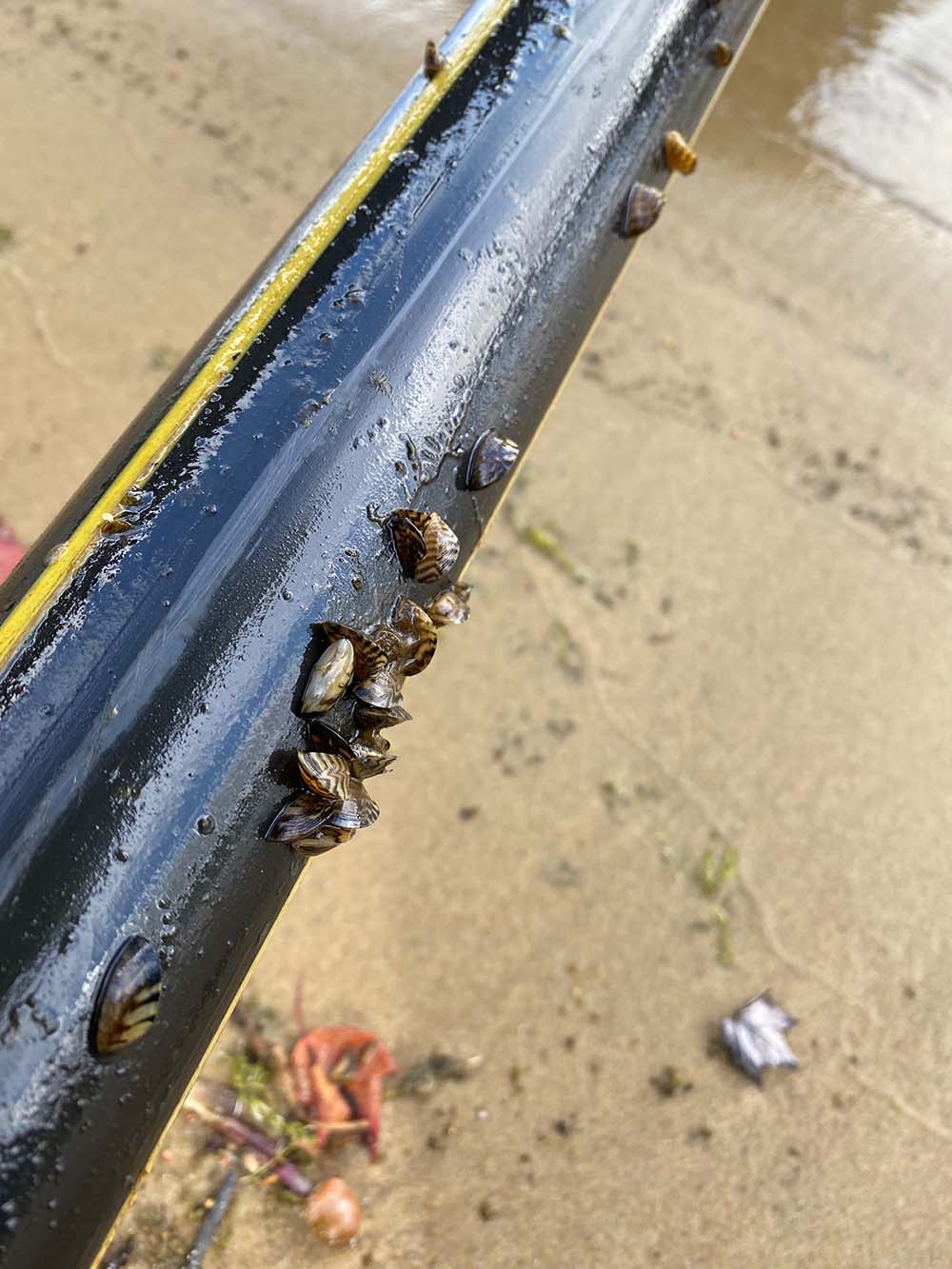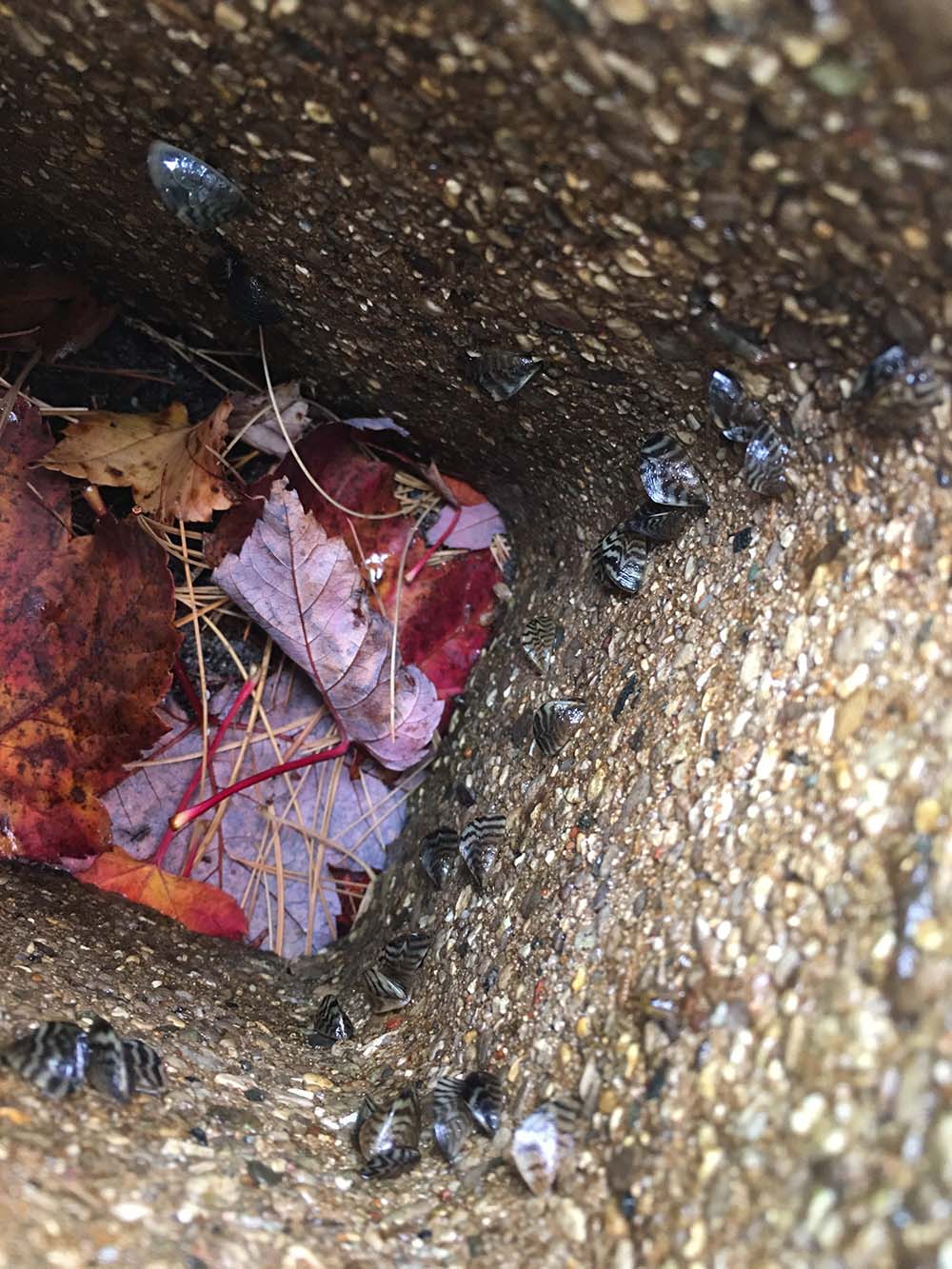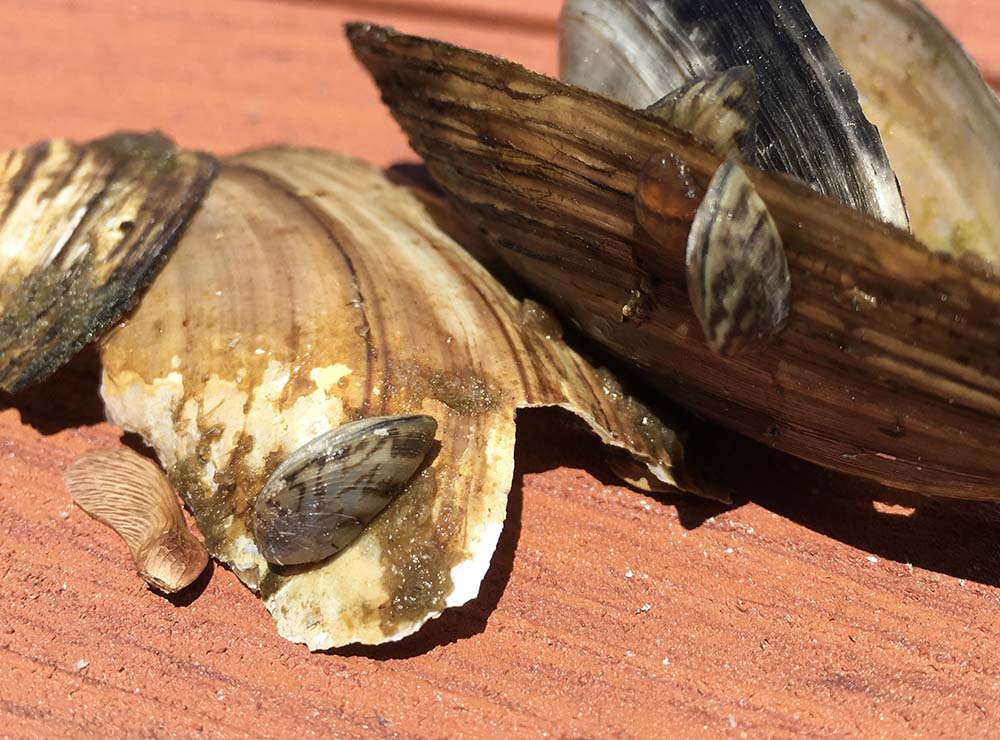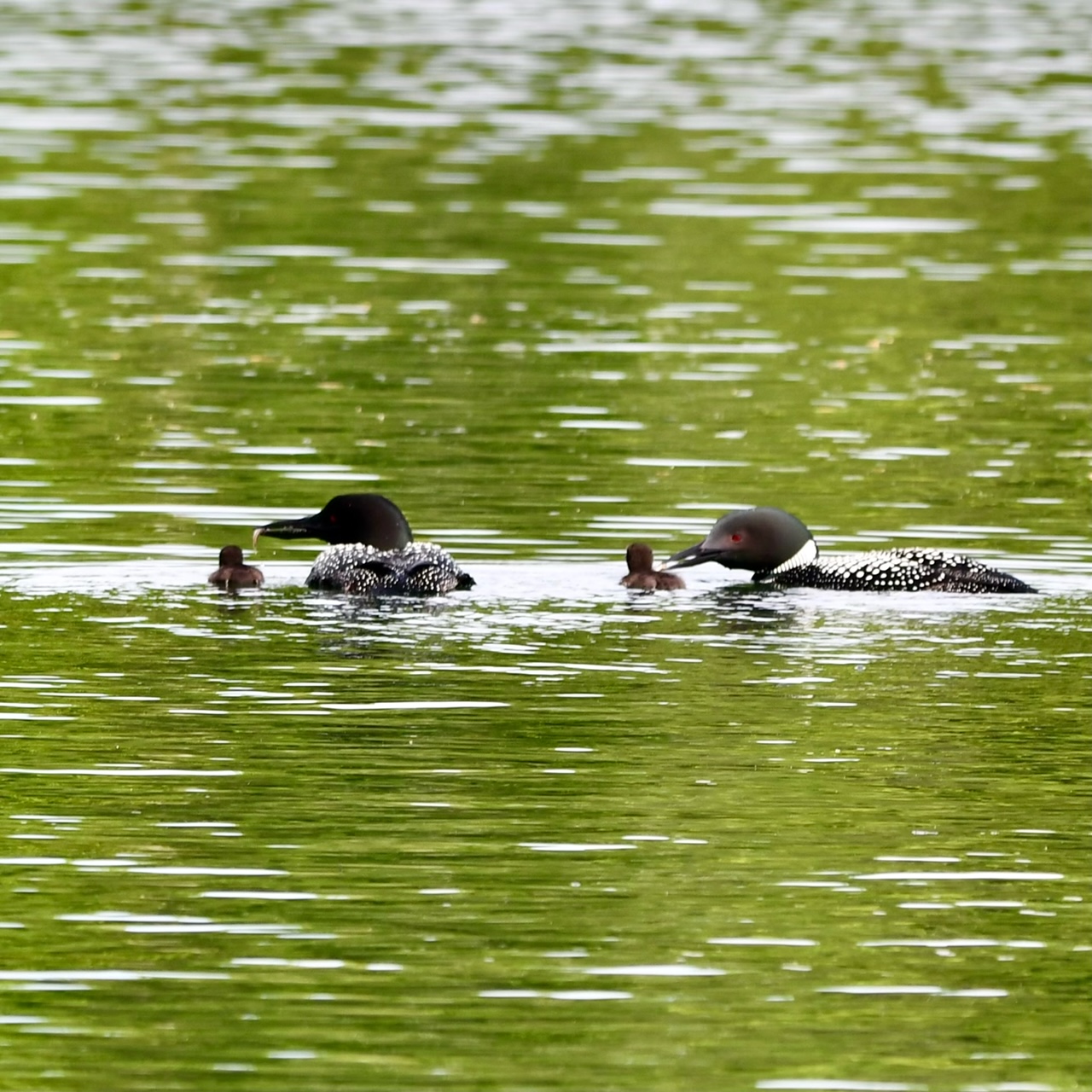
A loon pair and their two chicks on Long Lake this year.
Long Lake Association is seeking nominations of candidates to join the Board!
The Long Lake Association Board of Directors is seeking nominations of candidates to join the Board. The Board comprises up to 12 members who each serve a three-year term. Due to departures, we need to fill up to 4 vacancies. You may nominate yourself or somebody else who is willing to serve. Please hurry because the nomination process closes on June 27th.
The election of new Board members is held at our Annual Meeting. You may vote before the meeting via the website or paper ballot. Ballots will be mailed before the meeting. This year’s annual meeting will be at Boone’s Long Lake Inn on Saturday, August 24th, at 9:00 a.m. Nominations should be submitted to Dave Porath, Membership/Nominating Chair, or Dave Baker, President. Email addresses for Dave Porath and Dave Baker can be found at longlakeassociation.com.

Disclaimer: Long Lake Fireworks are conducted by a private licensed party and permitted through Long Lake Township. Long Lake Association notifies its members when the fireworks show is scheduled. The association has no connection to the Long Lake Fireworks.
PRESIDENT’S MESSAGE | Dave Baker
I am happy to announce that the 2024 Welcome Back to Paradise Party will take place at Boone’s Long Lake Inn on June 3rd at 5:00 PM. Thank you to Boone’s Long Lake Inn for hosting us again this year! Please take time to read this newsletter to get updates from the Committee Chairs prior to the meeting. Your board members will provide a summary of this info at the meeting.
During 2024, the Long Lake Association will continue to strive to accomplish our main mission “to preserve Long, Mickey, and Ruth Lakes as a natural resource and recreation area through protection and prudent use of its environs.” As part of this mission, we will continue the successful effort to control the levels of invasive Eurasian Watermilfoil (EWM) in our lakes. This program is only possible thanks to your support. As you will read in greater detail later in this letter, we continue to evolve our treatment program to take advantage of multiple EWM control measures to achieve the best expense/treatment outcome for our lakes. Also, during 2024, we will continue the successful NMC intern program to take and analyze lake water samples to enhance our mutual understanding of the health of our lakes.
Long Lake Association is aware of and is participating in local discussions of topics that potentially impact our lakes including: potential infestations by a variety of invasive species that are already present in nearby inland waters; the related need to educate boaters about the necessity of thoroughly washing their boats and emptying ballast tanks (wake boats) prior to entering a new lake in order to prevent the transfer of invasive species; and the need for wake boats to operate at least 500 feet from shore and in a minimum of 15 feet of water depth to mitigate potential shoreline and bottomland damage.
I would like to encourage those of you that are not LLA members to join for the annual membership fee of only $45.00. Your dues help us in our mission to protect our lakes. Current members, please renew your membership for the 2024 year and consider renewing as a Centurion or Guardian member. Your membership dues are essential to our ability to deliver services to you. A dues envelope is enclosed for your convenience. I would like to thank our partners: Oleson Foundation, Long Lake Township, Long Lake Foundation, and NMC for their ongoing support!
On behalf of your LLA Board, we are looking forward to meeting everyone when we get together again in June!
Sincerely,
Dave Baker
President, Long Lake Association
Long Lake Association and Long Lake Foundation Partner to Deploy Benthic Mat Pilot Project
The Long Lake Association and the Long Lake Foundation worked in partnership to deploy a benthic mat pilot project on Long Lake on Saturday, September 2. The Long Lake Foundation fully funded the project and the Long Lake Association contracted to have the project deployed. A benthic mat is a methodology used to control invasive aquatic plants like Eurasian Watermilfoil (EWM) that consists of laying a material such as biodegradable burlap on the lake bottom and weighing it down using sandbags to keep sunlight from getting to the invasive aquatic plants on the lake bottom. As part of this project, native plants were attached to the benthic mat including pondweed; slender naiad; and wild celery to help repopulate the area with native aquatic plants. This is a unique restoration technique that has only been tried on Long Lake, to our knowledge. This project is part of the Long Lake Association’s mission to continue to control the levels of Eurasian Watermilfoil (EWM) and evolve our treatment program to take advantage of all possible control measures to create a hybrid approach including benthic barriers, new treatment types, etc. As always, please remember to remove any plants attached to your boat and/or trailer before entering the lake and remind boat visitors that Long Lake has a brand-new boat wash station at the former fire hall located at 8870 N. Long Lake Road.
Please review the video provided below that provides an underwater survey of the benthic barrier site located at the north end of the peninsula in Long Lake.
Please note that the Eurasian Watermilfoil (EWM) shown growing from the edges of the benthic mat will be monitored in 2024. Any EWM that does re-grow will be hand-pulled or covered in 2024.
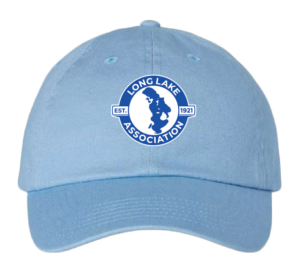
Display Your LLA Support!
Encourage other riparians to join and preserve our gems.
Limited Edition Baseball Cap
Join LLA Supporting Membership
Centurion Membership $145 receive one baseball cap
Guardian Membership $245 receive two baseball cap
The baseball cap(s) are our gift to you for deeply supporting our efforts in preserving and protecting Long, Ruth, and Mickey Lakes.
CURRENT NEWS BULLETIN BOARD
2024 LLA MEETING SCHEDULE
Board meetings are open to the membership for public comment at the beginning of the meeting. Please contact a board member if you wish to be put on the agenda. Board meetings begin at 5:00 pm.
2024 BOARD MEETING SCHEDULE
April 10 | LLA BOD Meeting
May 8 | LLA BOD Meeting
June 3 | LLA 2024 Annual Discussion Meeting/Welcome back to Paradise-Boone’s Long Lake Inn; Time: TBD
June 25 | EWM Treatment #1
July 10 | LLA BOD Meeting
July 30 | EWM Treatment #2
August 14 | LLA BOD Meeting
August 24 | Annual Board Meeting-Boone’s Long Lake Inn 9:00-11:00 am
September 11 | LLA BOD Meeting
October 9 | LLA BOD Meeting
November 13 | LLA BOD Meeting
Fall TBD | Adopt A Road
Eurasian Watermilfoil Treatment Dates:
Our Lake Management Committee will be treating various sites for Eurasian Watermilfoil the dates are June 25, 2024 and July 30, 2024. Riparian homeowners will be notified directly if treatment is in front of their property. Please stay a safe distance from our treatment boats during treatment.
Thank you in advance!
CENTRAL DISPATCH NON-EMERGENCY – 231-922-4550
(non-emergency calls for service for Law Enforcement, Fire, and Emergency Medical Services)
MARINE PATROL – 231-922-2112 (seasonal enforcement of boating laws on inland lakes)
DNR REPORT ALL POACHING (RAP) line-800-292-7800 (CALL OR TEXT)
(If you witness loon harassment, poaching, etc.)
Try to get the MC number when reporting any incident.
Pictures and especially videos of the incident are beneficial.
2021 marks a significant milestone for Long Lake!
As it celebrates the 100th anniversary of the origins of the Long Lake Association.
How did this party get started?
In September of 1921, twenty-five Long Lake property owners at the south end of the lake banded together and pitched in $1 each to form an organization named the Evergreen Beach Resort Association. This pioneering group of lake lovers recognized the need to organize to effectively maintain the quality of Long Lake for themselves and generations to come. The name was formally changed to The Long Lake Improvement Association in 1948. Later, the word Improvement was dropped, and the organization was incorporated as it stands today. Watch for more fun facts on our website and Facebook.
August 1982 Newsletter
June 2021 Newsletter
JOIN THE LONG LAKE ASSOCIATION
LLA ’s only source of annual income is from the membership dues that our residents and families contribute. These funds allow us to operate as a not for profit organization and provide operating funds for the Board to direct to projects and programs that are in the best environmental interest of Long, Mickey, and Ruth Lakes. Joining and Membership Renewal is easy!
Just click the button below labeled JOIN LLA TODAY! Your payment can be made using PayPal or by credit card. Or, if you receive your newsletter by US Mail, a membership envelope is included in the Spring issue. If you have not become an LLA member yet, please consider doing so this year! LLA Membership is open to all interested parties.
Long Lake Association is 501c4 certified!
INVASIVE SPECIES [ZEBRA MUSSELS] | Rick Dahlstrom
Zebra and quagga mussels are in Long Lake!
Zebra Mussels
Zebra mussels are a well-known invasive species in the Great Lakes region. Together with their cousin the quagga mussel (which can grow a little larger and live in deeper waters, but looks the same), they have spread into inland waters and the Great Lakes since they arrived in Lake St. Clair.
2024 Update
Before 2020, we had very few findings of Zebra Mussels in Long Lake. Based on reports from LLA members, 2021 showed a significant increase in Zebra Mussel findings. Since then, reports from members indicate that the problem has worsened. The number of reports and the reported size of the colonies have increased. Larger colonies are problematic because they can cause injury due to their sharp-edged shells. The picture shown is an example of a colony that was found along the shoreline off Crescent Shores.
The LLA has researched treatment options to eliminate or control the growing numbers of zebra mussels. One treatment method uses a product named Zequanox. Experiments using Zequanox were conducted in Lake Michigan and in Round Lake near Petoskey. The tests proved ineffective and expensive. Currently, there is no effective remedy for Zebra Mussels.
Given that there is no magic remedy for eradicating Zebra Mussels, what can we do? The LLA suggests that as you come across them, cleanly remove them from their attachment and destroy them on dry land. Do not leave any part of the mussel body in the water. PLEASE educate friends, relatives, and renters who may be bringing boats onto the Lake to wash their boats and clean out ballast or bilge tanks before launching. Put the new boat washing station at Long Lake Township to good use! While Zebra Mussels have made it into our lakes, we can still prevent other invasive species from gaining access.
Thank you for all that you do to maintain the high quality of Long Lake.
FEMALES CAN PRODUCE A MILLION EGGS A YEAR!
In 2021 zebra mussels are again reproducing in Long Lake. Each female can produce a million eggs in a year. As you see in our lake they are often found attached to clamshells. If you see Zebra Mussels on rocks, clams, dock stands, or anything else, please immediately remove them from the lake. We should all stay vigilant while enjoying our time in the water.
Preserve our lakes future – Donate Now!
We are blessed to live in a spectacular watershed. But what does it take to maintain the health and beauty of this precious asset? It takes organizations dedicated to preserving the natural features and ensuring our enjoyment of this community long into the future. That is where the Long Lake Association and the Long Lake Foundation come in. These organizations have different functions but share the same goal–preserving the beauty of Long Lake and its watershed for years to come. Consider the two organizations to be a partnership working for the benefit of the environment and its members. Here is a closer look at the work each does:
LONG LAKE FOUNDATION
- As a 501c3 entity, LLF provides leadership and financial resources for projects and programs that enhance Long Lake and the Long Lake Watershed.
- LLF orchestrates the protection of the islands from fires and erosion
- Makes possible the Long Lake/NMC Freshwater Studies program that monitors water quality on Long,
Mickey, Ruth, Fern, and Page Lakes. - Works in concert with the Grand Traverse Regional Land Conservancy helping to make the Timbers
Recreation Area a reality. - The LLF has made significant contributions to the enhancement and enjoyment of the lake investing over
$7,500.00 annually on average over the last 3 years.
LONG LAKE ASSOCIATION
- As a 501c4 entity, LLA is the administrative arm of this partnership.
- Through committees, the LLA oversees communication with the membership, monitors community
affairs with the township, the news and information source, promoting community involvement. - LLA is the boots on the ground and muscle that targets; Lake Science, Community Affairs, Fishing and
Wildlife, Lake Management which includes the detection and management of invasive species and Water Safety. For example, we continue to treat Eurasian watermilfoil twice each year to improve the quality of the lakes for boating, etc. using advanced technology to limit the amount of chemical required to treat the lakes.
Both organizations are vital for the long-term health of Long Lake Watershed. To assure cohesiveness, a prescribed number of individuals sit on both boards.
As you plan your end of year giving, consider a tax-deductible contribution to the Long Lake Foundation. Your donation will help preserve the beauty of Long Lake for the next generation. As always, your contributions to the Long Lake Foundation are tax deductible under the 501c3 designation of the IRS code. These funds will go directly to the Long Lake Improvement Fund.
Thank you in advance for your generous donation.
